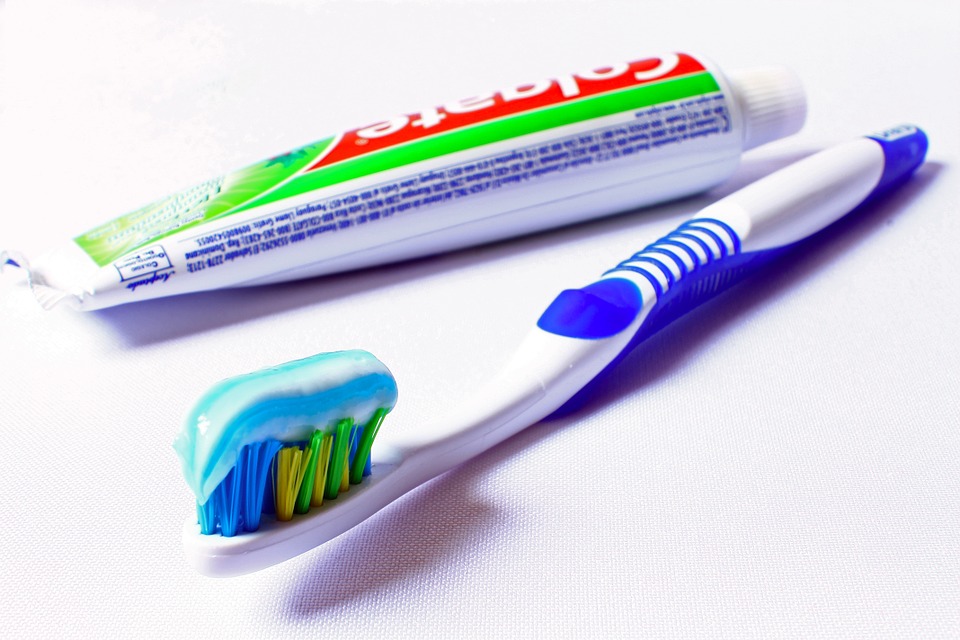Brushing your teeth is one of those things that you start learning how to do from your youngest days. Pediatric dentists even recommend wiping out your baby’s mouth daily with a soft, wet cloth before they have teeth! It’s pretty remarkable, then, that even though we have been taught how to brush our teeth the right way since we were children, few adults take the time to do it correctly. Maybe you find yourself in one of these categories:
- A brush biter?
- A surface scrubber?
- A speedster?
- A back teeth abandoner?
- An infrequent flosser?
Maintaining a healthy smile should take up roughly five minutes of your entire day – that’s less time than it takes to stand in line at the grocery store! There is an element of technique and know-how that will keep the cavities at bay and help you keep your smile looking (and smelling) great.

(Pixabay / Gadini)
The Toothbrush
Your toothbrush is an essential contributor to how well you brush your teeth. Switch out your toothbrush every three months and after any sickness. You might also want to retire your brush if you notice the fade stripe has ebbed or the bristles are bent over.
It seems like there are a million different brushes to choose from at the grocery store, so the next time you’re in the market, look for a soft-bristled brush. Medium or firm bristles may make your teeth feel cleaner, but they can actually damage your teeth and gums with extended use. One study also suggested that the swanky brushes with multi-leveled angled bristles might remove plaque even better than standard flat toothbrushes.
Whatever design you choose – flat or angled bristles, manual or electric – let your toothbrush dry completely between uses by standing it upright in a cup or toothbrush holder. Try to keep it as far away from the toilet as possible (or use a toothbrush cover if your bathroom is tiny) because water particles from the toilet splash can muck up your brush.
The Toothpaste
If you want to be certain that your toothpaste is good for your teeth, look for the ADA stamp of approval on the box or tube. While not all toothpastes manufacturers elect to have their toothpastes tested by the ADA, having that stamp of approval shows that your toothpaste meets certain standards and doesn’t have any components that are known to damage your teeth.
If nothing else, look for a toothpaste that has fluoride in it. Fluoride is a natural substance that helps protect your teeth from cavities. It is perfectly safe and highly effective at keeping your mouth healthy and clean.
You should also stay away from highly abrasive toothpastes because they can wear away the enamel on your teeth, which can cause tooth sensitivity and make your teeth more susceptible to cavities.
The Technique
There is an element of technique to brushing your teeth effectively, so here is a brief refresher course called Toothbrushing 101.
Molars
Your molars are the big, round teeth in the back of your mouth that are good for chewing and grinding food. It’s always a good idea to start brushing in the same place of your mouth every day, and we recommend starting at the back, top left molars and working your way clockwise around the mouth. Start by angling your toothbrush 45-degrees toward the gums and brush in small circles for 15-20 seconds per area of the mouth (back top molars outside, back top molars inside, back bottom molars outside, back bottom molars inside). If you have a hard time gauging how long 20 seconds is, it’s roughly the “Happy Birthday” song twice.
Once you’ve cleaned the outside and inside of each molar, use the same circular motion to brush the flat, chewing surface of all of your molars. When you’re done with the molars, move onto the lingual.
Lingual
Your lingual teeth are the flat, front teeth that are better for tearing apart or biting into food. To clean them, use the tip of the toothbrush to flick up or down (depending on if you are brushing the top or bottom teeth) away from the gums. Be aware that if you stand too close to your mirror during this stage, you might have some splatter.
Everything Else
The “everything else” part of your mouth includes your tongue, the inside of your cheeks, and the roof of your mouth. Once you have finished brushing your teeth, use your toothbrush to gently brush these sensitive places also.
When you have finished brushing your mouth for roughly 12 verses of the “Happy Birthday” song, you are ready to spit, rinse with water, floss, and finally rinse again with your preferred mouthwash. There’s a whole slew of different mouthwashes to choose from depending on your end goal, but try to at least look for a mouthwash that has the ADA seal of approval. That way, you know you are getting the best, safest clean.
